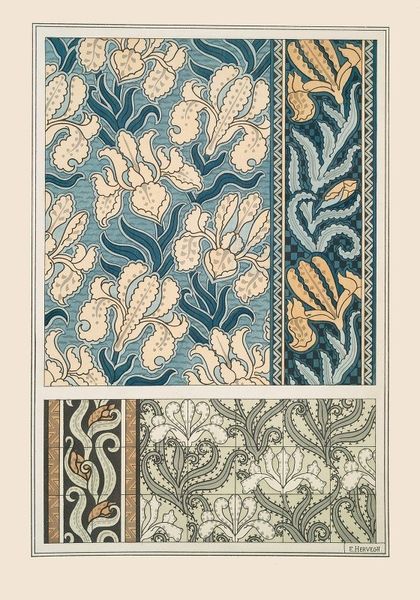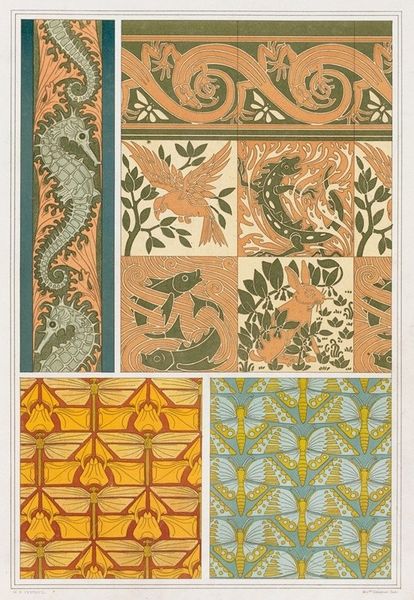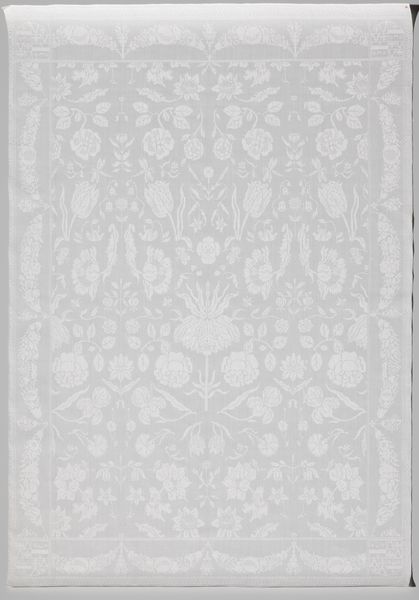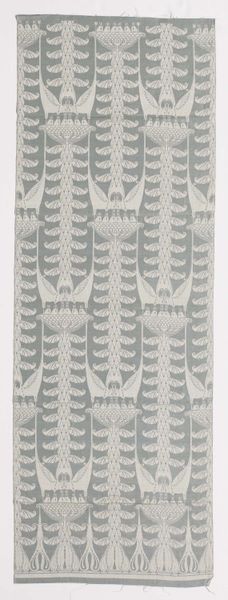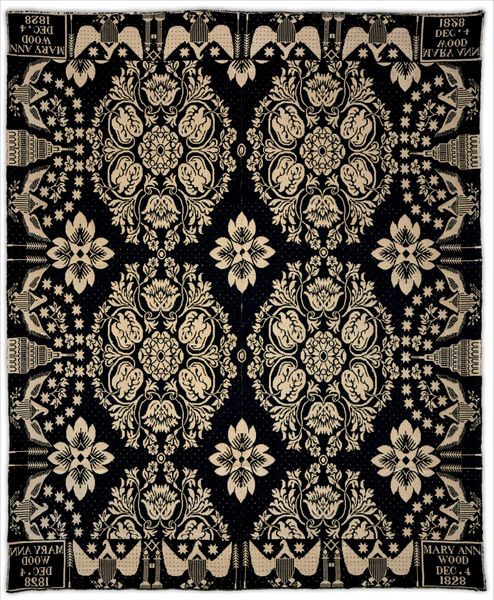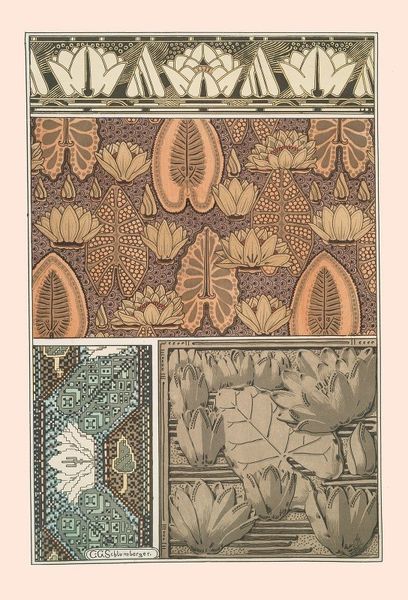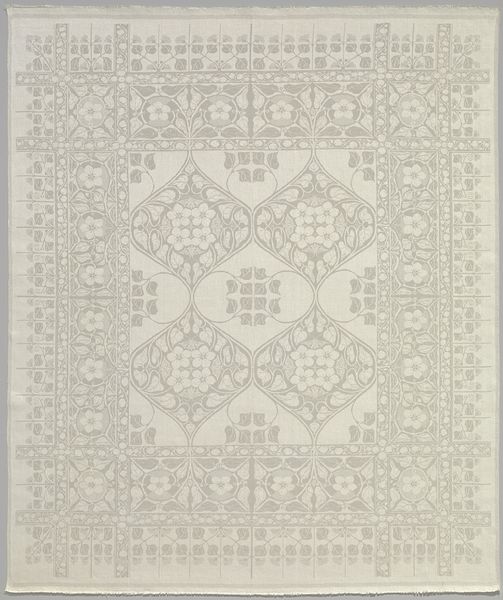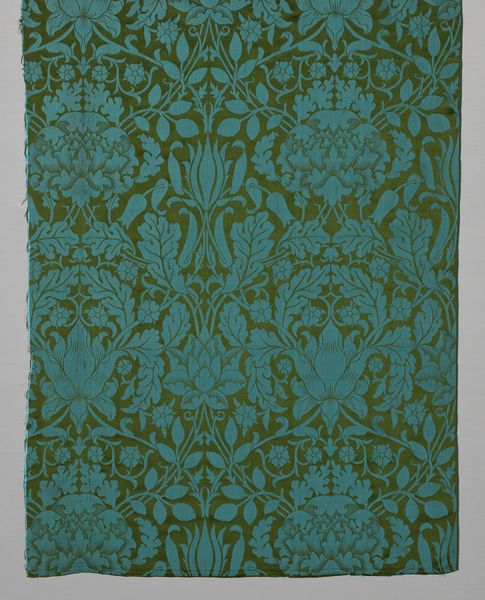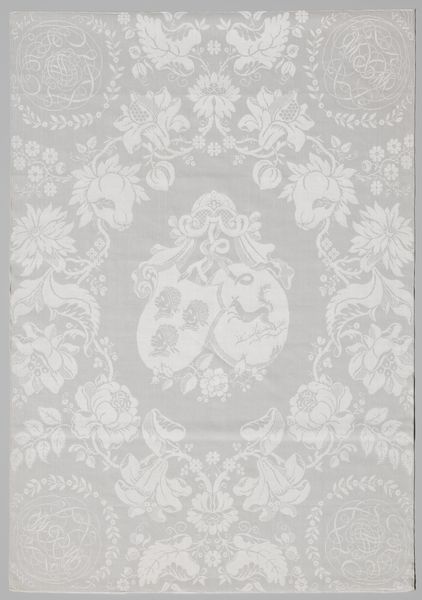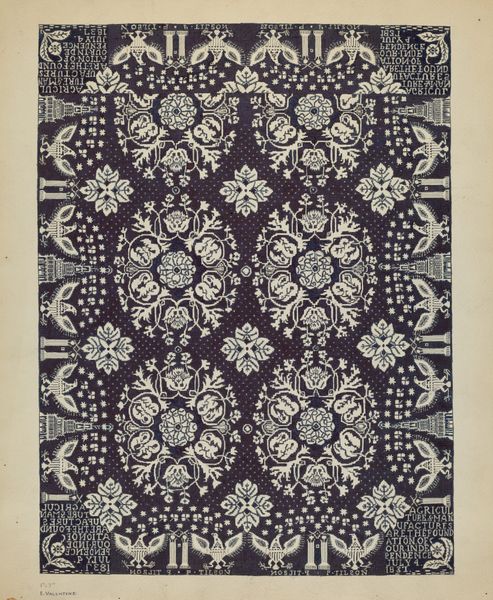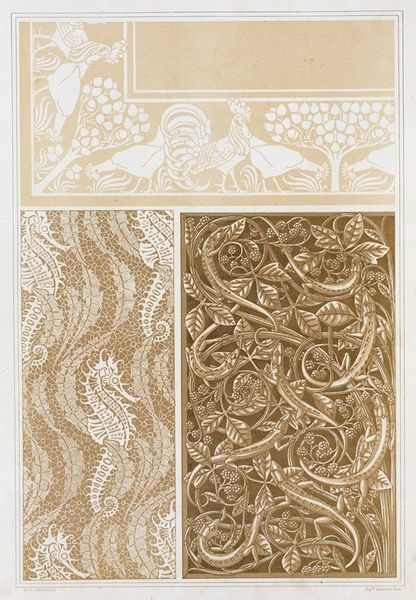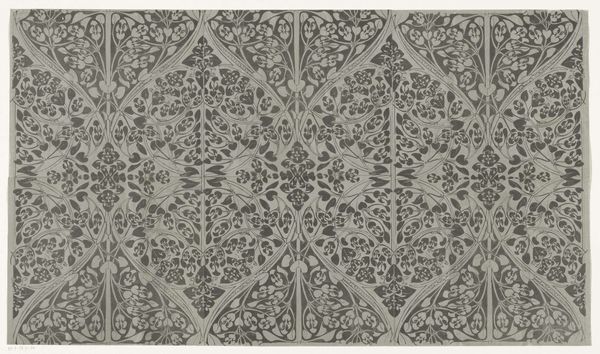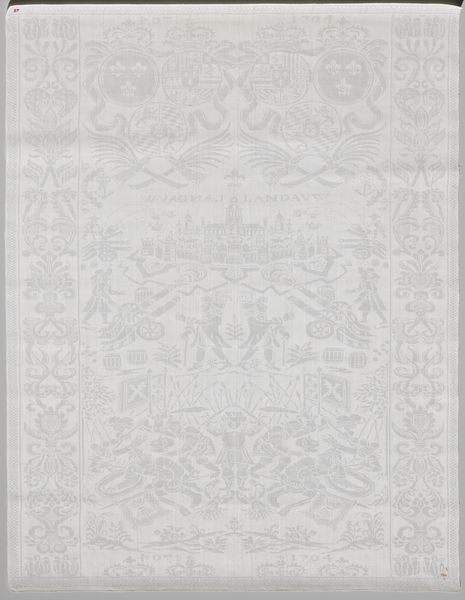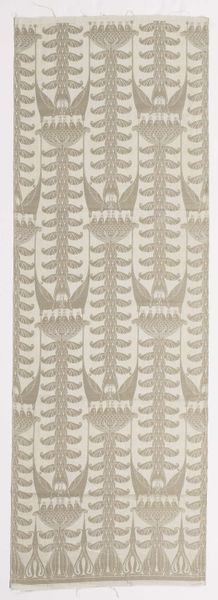
Paon, grille fer forgé. Cigales et groseiller, linge damassé. Libellules et pissenlit, dentelle. 1897
0:00
0:00
drawing, graphic-art, textile
#
drawing
#
graphic-art
#
organic
#
art-nouveau
#
pattern
#
textile
#
organic pattern
#
fabric design
#
pattern repetition
#
textile design
#
decorative-art
Copyright: Public Domain: Artvee
Editor: So, this is "Paon, grille fer forgé…" by Maurice Pillard Verneuil, created around 1897. It seems to be a study for textile or wallpaper design, showcasing Art Nouveau’s love for organic forms. The detailed rendering and symmetry almost feel overwhelming at first glance. How do you interpret this work? Curator: I see Verneuil’s design as a commentary on the political landscape of the late 19th century, through the lens of class and industrial production. Art Nouveau itself was a rebellion against industrial drudgery. How might these stylized natural motifs—the peacock, the berries, the dragonflies—speak to a desire to reclaim beauty and craftsmanship from mass production? Editor: That's interesting. The peacock, of course, is a symbol of wealth and luxury. And all of this would have been made for wealthy clients? Curator: Exactly. Art Nouveau, while advocating for accessibility, was often commissioned by the bourgeoisie. Verneuil, therefore, could be both celebrating nature and critiquing the societal structures that commodify it. How do you see the tension between nature and artifice playing out in these patterns? Editor: I notice that these natural elements are stylized, flattened into decorative motifs, they feel like an idea of nature rather than nature itself. Curator: Precisely! They highlight how even the most radical movements can be entangled in the very systems they aim to critique. The dense patterning can feel simultaneously liberating and restrictive. Does that resonate with you? Editor: It does. I see now how the aesthetic choices are tied to the social and political currents of the time. Thanks, that was insightful. Curator: And for me. It’s always enriching to see these works through fresh eyes.
Comments
No comments
Be the first to comment and join the conversation on the ultimate creative platform.
